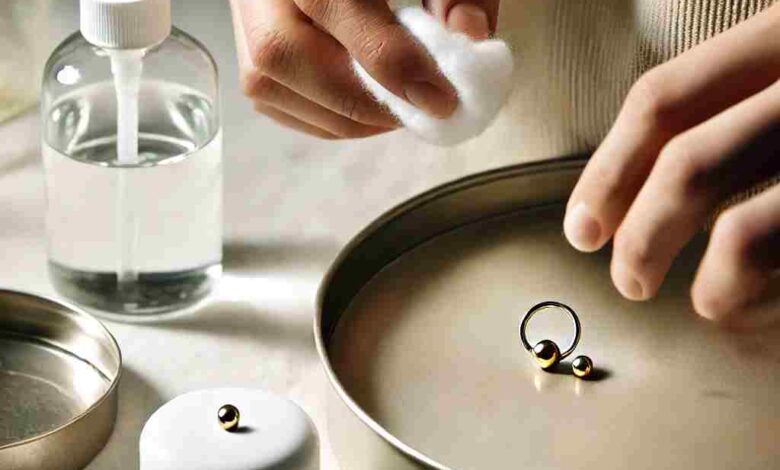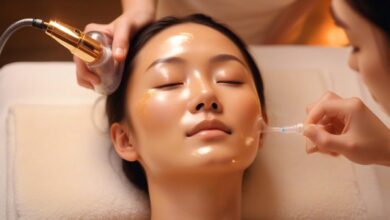Navel Piercing Aftercare Tips for Fast Healing

Getting a navel piercing is an exciting way to express your style, but it’s essential to follow proper aftercare for a smooth healing process. Belly button piercings can take time to heal, often between 6 to 12 months, depending on your body and care routine. To ensure your new piercing heals quickly and without complications, here’s a comprehensive guide filled with aftercare tips.
Keep Your Piercing Clean
The first and foremost thing to do in the healing of a navel piercing is to keep it clean. Twice daily, clean the piercing area with saline or non-iodized sea salt solution. You can make this by combining 1/4 teaspoon of salt in 8 ounces of warm distilled water. Soak with a cotton ball or gauze in the solution and dab around the piercing, and pat dry with a paper towel or lint-free towel. Do not use alcohol, hydrogen peroxide, or any harsh soaps as they may dry it out and irritate the piercing, causing it to take longer to heal.
Avoid Touching Your Piercing
It is tempting to touch the jewelry or even turn it, but avoid doing this unless you are cleaning it. This can result in the area coming into contact with bacteria from other parts of the body, which increases the chances of infection. Make sure to wash your hands carefully before you clean or touch the piercing. Furthermore, refrain from wearing tight clothes that could stick to the piercing and cause abrasion.
Use Proper Jewelry
The jewelry you choose plays a crucial role in how well your piercing heals. Opt for high-quality materials like surgical steel, titanium, or gold to minimize the risk of allergic reactions. Poor-quality jewelry can trap bacteria and irritate your skin, which may delay the healing process. Make sure the jewelry fits properly and doesn’t put unnecessary pressure on the piercing site.
Monitor for Infection
Some redness, swelling, and discomfort are normal in the first week, but if you notice worsening pain, yellow or green discharge, or a foul odor, these could be signs of an infection. In such cases, consult a healthcare professional immediately. You may also use hydrogen peroxide or antibacterial ointments as directed by your piercer or doctor.
Be Mindful of Activities
Be careful what you do during the healing process; you should be cautious with activities that can irritate your piercing. Avoid swimming in pools, lakes, or hot tubs as these can introduce bacteria into the piercing. Steer clear of high-impact activities that might pull or bump the area, and avoid tight clothing or yoga poses that put pressure on your abdomen to prevent irritation.
Stay Hydrated and Eat Healthy
Physical health plays a crucial role in how quickly your body recovers. Stay hydrated by drinking plenty of water and follow a nutritious diet rich in vitamins and minerals to promote healing. Foods high in vitamin C and zinc will boost your immune system and support faster recovery. Adding probiotics to your diet can further enhance your skin health and immune system.
What to Avoid
During this process, avoid applying lotions, perfumes, creams, or anything on top of your piercing that can clog the area and cause an infection. Also, don’t change your jewelry too quickly; you want to wait until the piercing is fully healed, which can take as long as twelve months. Over-cleaning it can lead to irritation, so twice a day is enough.
Patience
Healing a navel piercing takes time, so be patient. Every body heals at its own pace, so don’t rush it. Stick to your aftercare plan and pay attention to any changes in the appearance or feel of the piercing. With proper care, your piercing will heal beautifully, allowing you to show it off for years to come.
How to Deal with Pain and Discomfort
Some pain or discomfort is normal post-navel piercing, especially within the first few days. To address this, take ibuprofen (an over-the-counter pain reliever) which can help bring down the pain and inflammation. You can also relieve swelling and discomfort by placing a cold compress on the area. Just make sure to never put the ice directly onto your piercing, and instead put it in a clean cloth before gently holding it against your skin.
There is some normal discomfort, but if you are in a great amount of pain, there is an issue. If you go past a couple of weeks and still have persistent pain, it may be worth visiting your piercer or a health professional.
Long-Term Care After Healing
They help to heal your navel piercing and keep it healthy even after healing. Again, clean the area periodically and more so when changing your jewelry or after sweating. Even when healed, the use of high-quality jewelry is important to prevent irritation or infection. Look for symptoms – redness, swelling, and tenderness – which may be delayed signs of an infection.
All you have to do after that is get used to wearing different jewelry types, choosing the ones that fit well with your size and are made of materials that won’t trigger skin irritation. Removing your piercings too soon or using metals of inferior quality can lead to them healing together, causing complications.
When to Seek Medical Attention
For the most part, navel piercings heal without problem but on occasion medical attention will become necessary. If you see significant redness, swelling, or pain or if the discharge is yellow or green, this indicates infection and infection should be searched for. If you ever get a fever, or the area around your piercing feels hot to the touch, these are red flags that something is wrong and you should definitely see a doctor.




